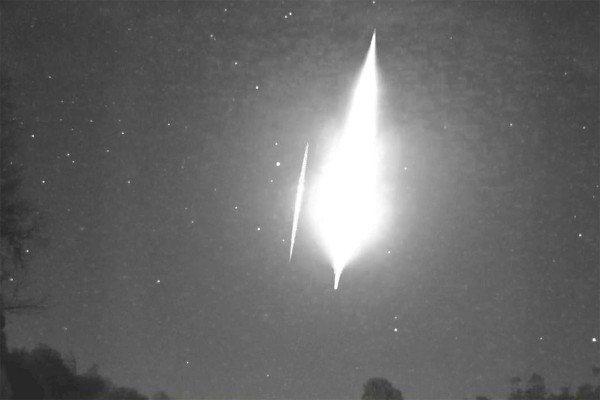At 10:50pm on Sunday August 28, a fireball ripped across Otago’s night sky. Three specialty cameras, set up just a month before the event, managed to catch the meteor’s trajectory before it smashed into paddocks just outside Dunedin. To our knowledge, no alien technology has been recovered from the site - yet.
The whole situation has been “very exciting”, said Thomas Stevenson, a student in the Geology Department. He was the first person from the University to see the fireball’s pictures, and the experience seems to have left him rocketing to fame. He reckoned he was getting a call about the meteorite “every ten minutes or so” from curious reporters. This was a nice surprise, he said, given that “[the media] had never wanted to talk to me before”. We would like to note that Critic Te Ārohi is always keen to stay updated on geology-related movings and shakings.
Three cameras, specially designed to capture meteors, were stationed in Dunedin, Ōamaru and Alexandra. Thomas’ team had just finished setting them up when the fireball made its grand entrance, in full view of the waiting paparazzi (papa-rock-zzi?). It was so bright that the cameras didn’t even register it as a fireball, thinking it was the moon.
The time and place of the impact was “very lucky,” said Thomas: “It was like fate just handed it to us.” He explained that meteors are relatively common — on a single night, in the field of view of just one camera, you’d usually see more than 20. However, most of these burn up completely upon entering the atmosphere, which we recognize as shooting stars. Every year, only around four survive entry and crash into Aotearoa’s whenua, so having one land right in the middle of the brand-new camera array was kind of a big deal.
Before any science can be done, they have to find the thing. Meteors’ burning tails can be used to estimate velocity and direction, but they don’t last until it hits the ground. When a meteor slows down and cools down in Earth’s atmosphere, it enters “dark flight” mode, making it invisible to Thomas’ team’s cameras. This meant they needed to enlist some overseas colleagues to crunch some numbers and help them estimate an impact site. Once that was sorted, the search was on.
With some volunteers in tow, they headed out to a nearby farm (the likeliest impact site) to scour its paddocks. Unlike the movies, though, they weren’t expecting a smouldering crater or a burnt ring of trees. “When these things hit the ground,” explained Thomas, “they’re surprisingly cool. As they come through the atmosphere and start burning up, the material that's actually melted just shears off the sides and takes heat with it. Pretty much [like shucking corn].” However, being a watermelon-sized, 30kg lump of metal flying in at several hundred kilometres per hour, it would still leave a mark. As we went to print, the team had completed a week of searching, which was unsuccessful despite them enlisting drones (robotic) and more drones (hordes of interested schoolchildren), “just swarming over the hillsides”. They’ll have searched again by the time you read this, possibly with success.
While it was “very lucky” to have it land so close to campus, and just after the cameras and team had been assembled for this unpredictable event, the farm was still not the ideal impact site, according to Thomas. That title would go to “any desert”, where the blackened meteorite would be easily visible. Or, potentially, the Geology Department’s carpark. To complicate things, while “we know the owner of the farm”, said Thomas, “if the meteorite has indeed landed on his property, then legally he owns it.” Apparently this applies to anything that falls to Aotearoa from orbit, but Thomas wasn’t sure if that included satellites. Let us know if one lands in your yard, though.
“We had two teams searching the farm, one in the north and one in the south, and one team searching the road,” said Thomas. “We were hoping it fell on a road, because then it would be public domain. Whoever got to it first would be the owner.” Thomas did not tell us the precise location of the farm, possibly because if we found the meteorite on the road, Critic Te Ārohi would absolutely be claiming “finders, keepers” and taking it home. Thomas could probably tell. In the meantime, the hunt for the space rock continues.



